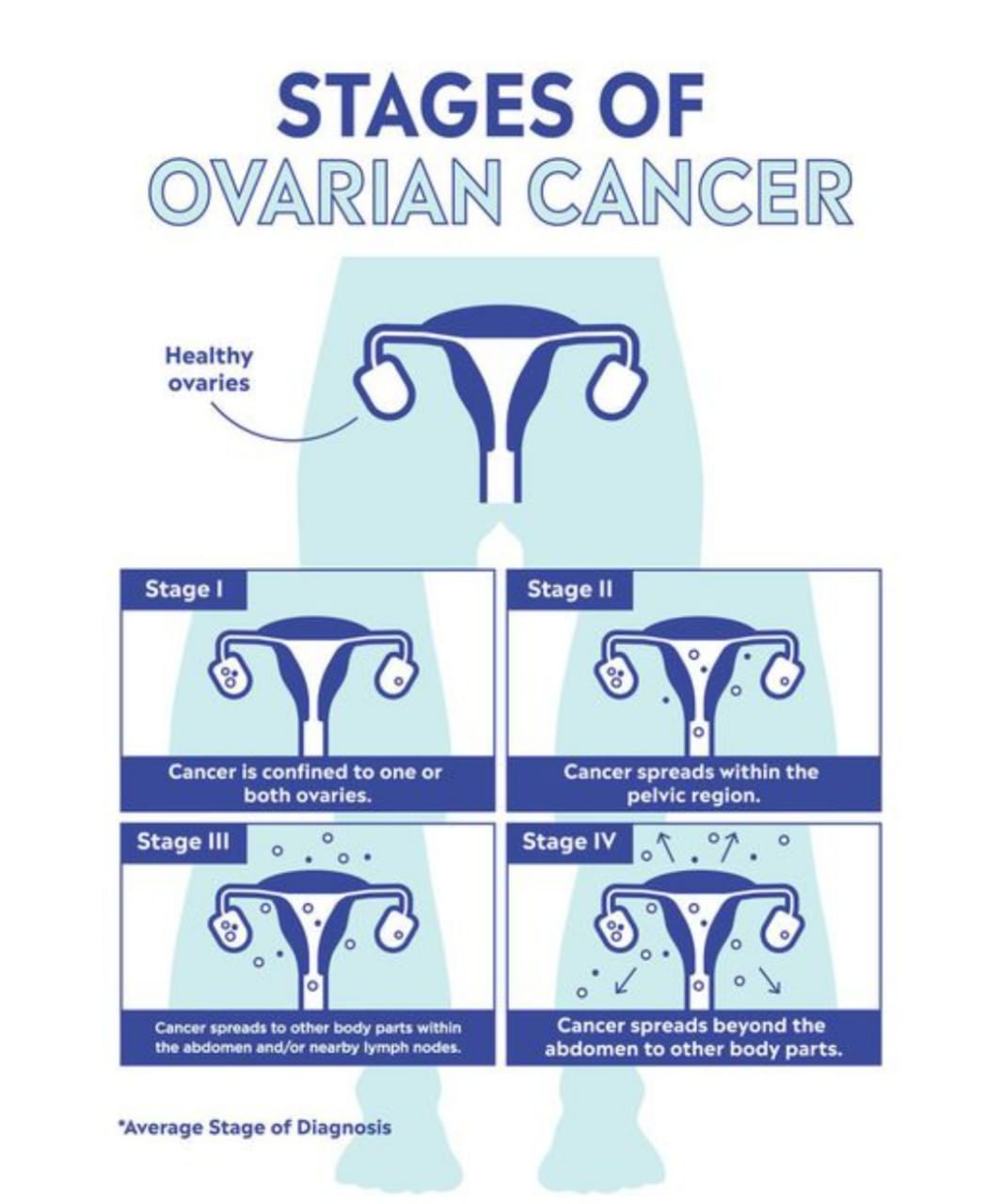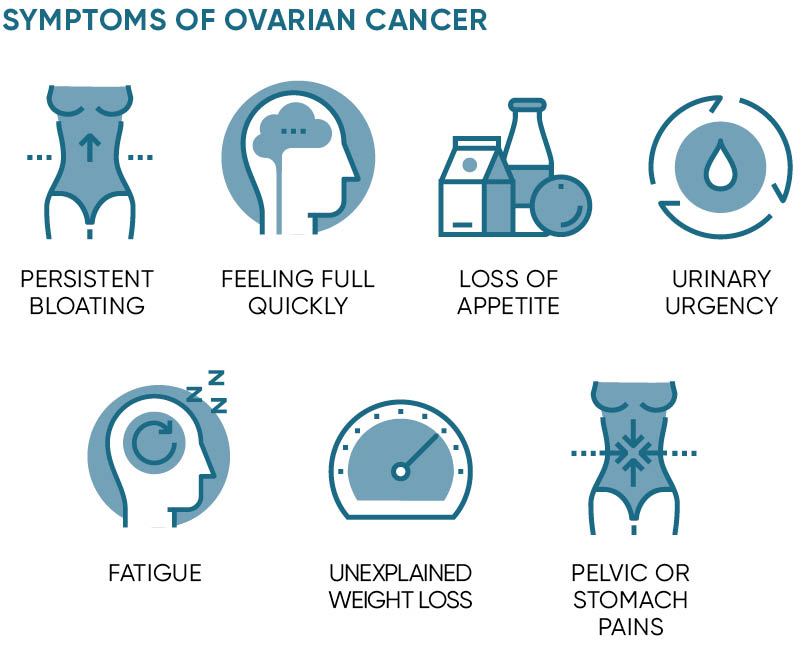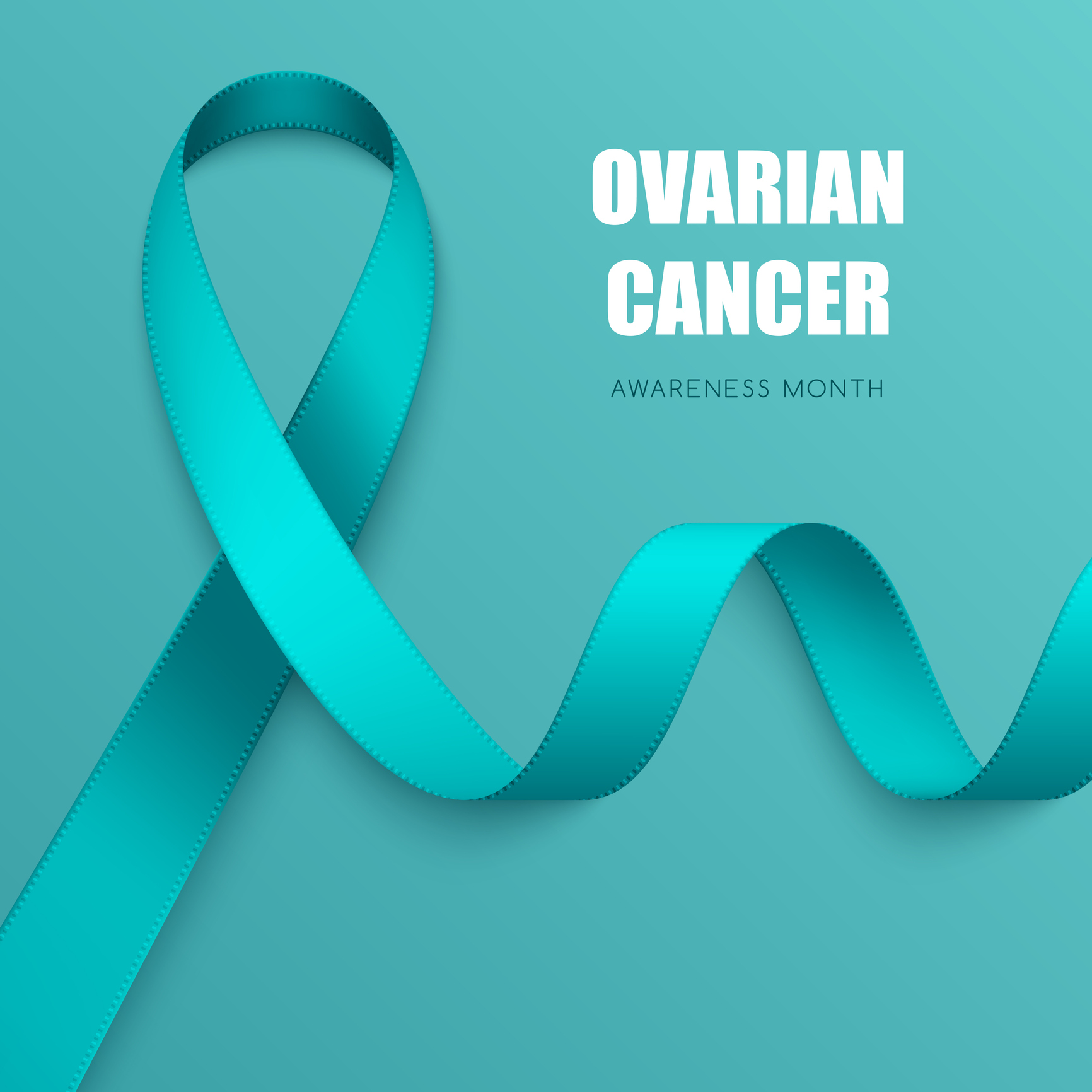


There are over 30 types of ovarian cancer, depending on the type of cell in which they start.
There are three common cell types:
1)Epithelial cells, which occur in the lining of the
surface of the ovary
2)Germ cells, which will become eggs for reproduction
3)Stromal cells, which release hormones and link up the
structures of the ovaries
Epithelial tumors are the most common and the most invasive.
They occur in around 85–90% of people with ovarian cancer.
Stages: The stage refers to how far the cancer has spread.
For example:
1)Localized: Cancer cells affect only the ovaries or fallopian
tubes and have not spread elsewhere.
2)Regional: Cancer has spread to nearby organs, such as
the uterus.
3)Distant: Cancer is present elsewhere in the body. It now
affects other organs, such as the lungs or liver.
Most ovarian cancers start in the epithelium, or outer lining, of the ovary.
In the early stages, there may be few or no symptoms.
Early symptoms may include:
1)Pain or pressure in the pelvis
2)Unexpected vaginal bleeding
3)Pain in the back or abdomen
4)Bloating
5)Feeling full rapidly when eating
6)Changes in urination patterns, such as more frequent urination
7)Changes in bowel habits, such as constipation
If any of these symptoms last for 2 weeks or more, a person should see a doctor.
There may also be:
1)Nausea and Indigestion
2)Appetite loss
3)Weight loss
4)Breathlessness
5)Fatigue
6)The symptoms can change if the cancer spreads to other parts of the body.

/symptoms-ovarian-cancer-5ae77cc28023b900366e0ed5.png)


1)Family history: Having a close relative with a history of ovarian or breast cancer increases a person’s chance of developing
ovarian cancer themselves.
2)Age: Around 50% of ovarian cancer cases occur after the age of 63 years.
3)Reproductive history: Having had one or more full term pregnancies is associated with a lower risk of ovarian cancer.
The more pregnancies a woman has, the lower the risk seems to be. Breastfeeding may also lower the risk.People who use some
types of fertility treatment may have a higher chance of developing borderline cells, but not all studies confirm this.
4)Breast cancer: People with a history of breast cancer seem to have a higher chance of ovarian cancer. This may be due to
changes in the BRCA gene.
5)Obesity and overweight: Ovarian cancer is more common in people with a body mass index (BMI) of over 30.
Other possible risk factors:
Other factors that may increase the risk of some types of ovarian cancer include:
1)Having high levels of androgens, or male hormones
2)Dietary factors
3)The use of talcum powder
Diagnosis: If routine screening or symptoms suggest that a person may have
ovarian cancer, a doctor will typically:
1)Ask the person about their personal and family medical history
2)Carry out a pelvic examination
They may also recommend:
1)Blood tests: These tests will check for high levels of a marker called CA-125.
2)Imaging tests: Examples include a transvaginal ultrasound, an MRI scan, or a CT
scan.
3)Laparoscopy: A healthcare professional will insert a thin tube with a camera
attached through a small hole in the abdomen, to see the ovaries and perhaps take
a Tissue sample for a biopsy.
4)Biopsy: This involves the microscopic examination of a tissue sample.
Treatment:
1)Surgery: The choice will depend on the type of cancer and how far it has spread.
Surgical options include a hysterectomy, removing one or both ovaries, and removing affected lymph nodes. A doctor will discuss
suitable options with the individual.
2)Chemotherapy: These drugs aim to kill cancer cells. If a person takes chemotherapy drugs by mouth or as an injection or infusion,
they will affect the whole body. Another option is intraperitoneal chemotherapy. In this case, a tube delivers the drug directly to
the body area affected by cancer. Chemotherapy can have widespread adverse effects, especially if it affects the whole body.
3)Targeted therapy: Some treatments target specific cells that help promote cancer growth. Examples include monoclonal antibody therapy
and angiogenesis inhibitors. Targeted therapy aims to limit the adverse effects by targeting specific functions
4)Radiation therapy: This technique uses X-rays to kills cancer cells. One way to do this is by introducing a radioactive liquid into
the peritoneum. This may help people with advanced ovarian cancer.
5)Immunotherapy (biotherapy): This aims to boost the immune system’s ability to defend the body against cancer. Vaccine therapy involves
injecting substances that will find and kill a tumor. It may help people with advanced ovarian cancer.

 She
Care
She
Care